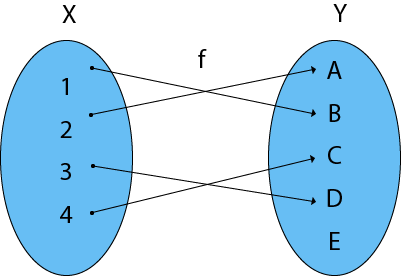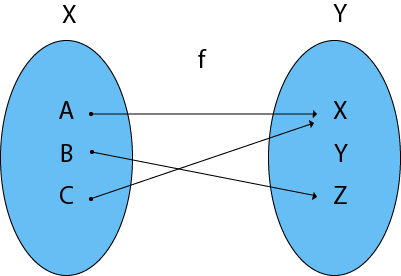FunctionsIt is a mapping in which every element of set A is uniquely associated at the element with set B. The set of A is called Domain of a function and set of B is called Co domain. 
Domain, Co-Domain, and Range of a Function:Domain of a Function: Let f be a function from P to Q. The set P is called the domain of the function f. Co-Domain of a Function: Let f be a function from P to Q. The set Q is called Co-domain of the function f. Range of a Function: The range of a function is the set of picture of its domain. In other words, we can say it is a subset of its co-domain. It is denoted as f (domain). Example: Find the Domain, Co-Domain, and Range of function. 
Solution:
Domain of function: {1, 2, 3, 4}
Range of function: {a, b, c, d}
Co-Domain of function: {a, b, c, d, e}
Functions as a SetIf P and Q are two non-empty sets, then a function f from P to Q is a subset of P x Q, with two important restrictions
Note1: There may be some elements of the Q which are not related to any element of set P.2. Every element of P must be related with at least one element of Q.Example1: If a set A has n elements, how many functions are there from A to A? Solution: If a set A has n elements, then there are nn functions from A to A. Representation of a FunctionThe two sets P and Q are represented by two circles. The function f: P → Q is represented by a collection of arrows joining the points which represent the elements of P and corresponds elements of Q Example1: Then f can be represented diagrammatically as follows 
Example2: Let X = {x, y, z, k} and Y = {1, 2, 3, 4}. Determine which of the following functions. Give reasons if it is not. Find range if it is a function.
Solution:
Next TopicTypes of Functions
|
 For Videos Join Our Youtube Channel: Join Now
For Videos Join Our Youtube Channel: Join Now
Feedback
- Send your Feedback to [email protected]
Help Others, Please Share










